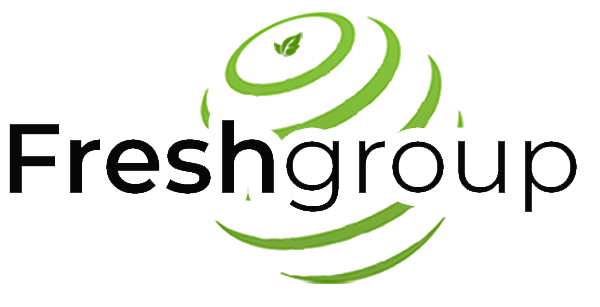Having a food business or company is a profitable venture but the quality and safety of your food is the cornerstone upon which the success of your business is built. A single product recall will not only hurt your business in terms of resources but what is far more at risk is the reputation of your company.
If you intend to have long-term success in the food industry, it is important that you have a food safety policy in place to show your organization’s commitment to ensuring that the food it is producing is safe for consumption and that the needed food safety and quality measures are in place to sustain it.
What is a food safety policy?
Food Safety Policy acts as a pivotal safety and quality framework for enterprises and organizations engaged in post-harvest food treatment, distribution and supply, food handling, food manufacturing, distribution, and retailing. It helps in outlining essential measures required to prevent food contamination and uphold stringent hygiene standards.
Moreover, it assumes a critical role in guaranteeing compliance with regulatory guidelines and requirements.
The responsibilities associated with food safety are expansive and significant, this is why the objective of a food safety policy document is to articulate how a food safety management system will be enacted within your organization to achieve desired food safety objectives.
A food safety policy should comprehensively cover the five fundamental pillars of Food Safety Control Management, which include Food Law, Inspection Services, Monitoring, Regulations and Standards, Laboratory Services, and Training. These pillars ensure a holistic approach toward maintaining and enhancing food safety standards within your organization.
Who is responsible for creating a food safety policy?
You would think that drafting a food safety policy is an activity reserved for only the quality assurance and food safety team; on the contrary, it requires a collective endeavor within your food company, encompassing contributions from cross-functional teams and individuals.
This joint effort guarantees the development of a thorough food safety policy, one that takes into account the diverse facets of your company’s operations, legal responsibilities, and optimal practices within the industry. To develop your company’s food safety policy, the following are those who will be engaged in the process and their responsibilities:
- Management and leadership: At the heart of accountability for ensuring food safety within your company, you hold the pivotal responsibility of cultivating a culture deeply rooted in food safety practices throughout the organization as the top manager or leader.
This includes dedicating resources, both human and financial, towards the development and implementation of comprehensive food safety policies and procedures. Your leadership sets the tone for the entire organization, emphasizing the importance of compliance with food safety regulations and standards, and fostering a work environment where everyone understands their roles and contributions in upholding these critical principles to safeguard public health and maintain the company’s reputation.
- Quality assurance and food safety team: As a member of this team, you are at the forefront of crafting the food safety policy. It’s your responsibility to meticulously design a policy that not only adheres to the required regulatory standards but also aligns with the best practices and highest standards set by the industry.
This entails careful consideration of various guidelines, laws, and quality benchmarks relevant to the food industry. By doing so, you help ensure that your company operates in a manner that prioritizes the safety and well-being of consumers while also meeting the expectations of industry authorities.
- Operations team: As a key member of the operations team, your role in shaping the food safety policy is crucial. Your insights regarding operational aspects such as production, storage, and distribution are invaluable in enriching the policy. Your understanding of how these processes function within the organization provides essential input that ensures the policy is not only comprehensive but also practical and effective. By actively participating in policy discussions and sharing your operational expertise, you contribute to a policy that takes into account the intricacies of daily operations, making it more robust and aligned with the operational realities of the company.
- Human resources teams: As a vital member of the human resources team, your role is crucial in seamlessly integrating the food safety policy within the organization. Your expertise in training and onboarding plays a significant role in this process.
You are responsible for ensuring that the food safety policy addresses issues that pertain to employees’ training, making them fully aware of its importance and guidelines during the onboarding process. Your efforts also extend to incorporating the policy into the compliance protocols, ensuring that employees understand and comply with the food safety standards set forth. By doing so, you contribute to a workplace where everyone is well-informed and aligned with the critical aspects of food safety, promoting a culture of responsibility and adherence to policies.
- Legal and compliance team: This team plays a crucial role by validating that the policy complies with legal and regulatory requisites, thus mitigating risks and potential liabilities.
- Food safety consultant: The role of a food safety consultant must not be underestimated in this process. They bring forth specialized knowledge and guidance essential for formulating a robust food safety policy in line with the latest industry standards and regulations. At Fresh Group Global, we take pride in providing our clients with tailored consultancy to elevate their food safety measures and keep them at the forefront of the industry. We recognize that every facility is unique, and we tailor our expertise to ensure our clients have a comprehensive and effective food safety policy in place. We aim to assist organizations in maintaining the highest level of food safety, instilling confidence in their operations, and contributing to the well-being of their consumers and, most importantly public health.
Drafting and vetting a food safety policy
Drafting and validating a food safety policy demands a meticulous approach to ensure its thoroughness, precision, and alignment with industry benchmarks. The step-by-step process you can follow is outlined below:
- Identifying key stakeholders: The process commences by identifying key stakeholders within your organization who should participate in drafting and scrutinizing the policy. Typically, this encompasses food safety experts, legal advisors, quality assurance personnel, and relevant management.
- Establishing a drafting team: Once you have identified the key stakeholders, you can establish a drafting team comprising a diverse group representing various departments within your organization. A leader or coordinator is appointed to oversee this process.
- Preliminary research: Now that you have your team ready, they conduct preliminary research, acquainting themselves with local and international food safety laws, regulations, and guidelines applicable to the company’s food product portfolio. Comprehending the distinct requirements and risks linked to the categories of food products handled by your company is of paramount importance.
This understanding forms the foundation for tailoring a food safety policy that adequately addresses the unique characteristics and potential hazards of each type of food product produced within your facility. Factors such as perishability, allergens, storage conditions, processing methods, raw material sourcing, and transportation should be carefully evaluated to design appropriate safety protocols and risk mitigation strategies.
By identifying these specific needs and risks, your company can implement targeted measures that prioritize the safety and quality of the food products, ultimately ensuring compliance with industry standards and regulatory expectations. They delineate the purpose, scope, objectives, and intended outcomes of the food safety policy, defining the areas and processes it will cover and aligning with the food safety management system.
- Drafts the policy: Following these initial steps, the team would collaboratively draft the policy, emphasizing clarity, brevity, and accuracy of terminologies used, adopting a logical structure addressing key components like hygiene, handling, storage, training, compliance, etc.
- Review and feedback: The draft is then circulated for review and feedback among the identified stakeholders, encouraging specific comments related to their expertise or departmental responsibilities.
- Incorporating the received feedback: The team revises and clarifies the policy based on the feedback received to enhance its content and coherence. The policy then undergoes a rigorous legal and compliance review to ensure compliance with all applicable laws, regulations, and standards. Subsequently, it is presented for senior management review, incorporating their final input and gaining approval to signify their commitment to the policy.
- Develop implementation strategy: At this stage, the team outlines a clear plan for policy deployment throughout the organization. This encompasses communication strategies, training programs, and integration into daily operations.
Now that you have a food safety policy in place, the policy is communicated to all employees, providing training and resources to ensure understanding and adherence. While the policy is now ready for utilization, establishing a regular review schedule is imperative to revisit its effectiveness and update it in response to changes in laws, regulations, industry best practices, or organizational needs.
By adhering to these systematic steps, you can construct a robust food safety policy that mirrors industry best practices, guarantees compliance, and actively fosters a safe and hygienic food handling environment within your organization.
FSQ Writer: Oluwatobi Eniyandunmo
Reviewed by: Raphael Samson
Kindly reach out to Fresh Group Food Safety And Quality Consulting for any food quality and safety inquiries.





